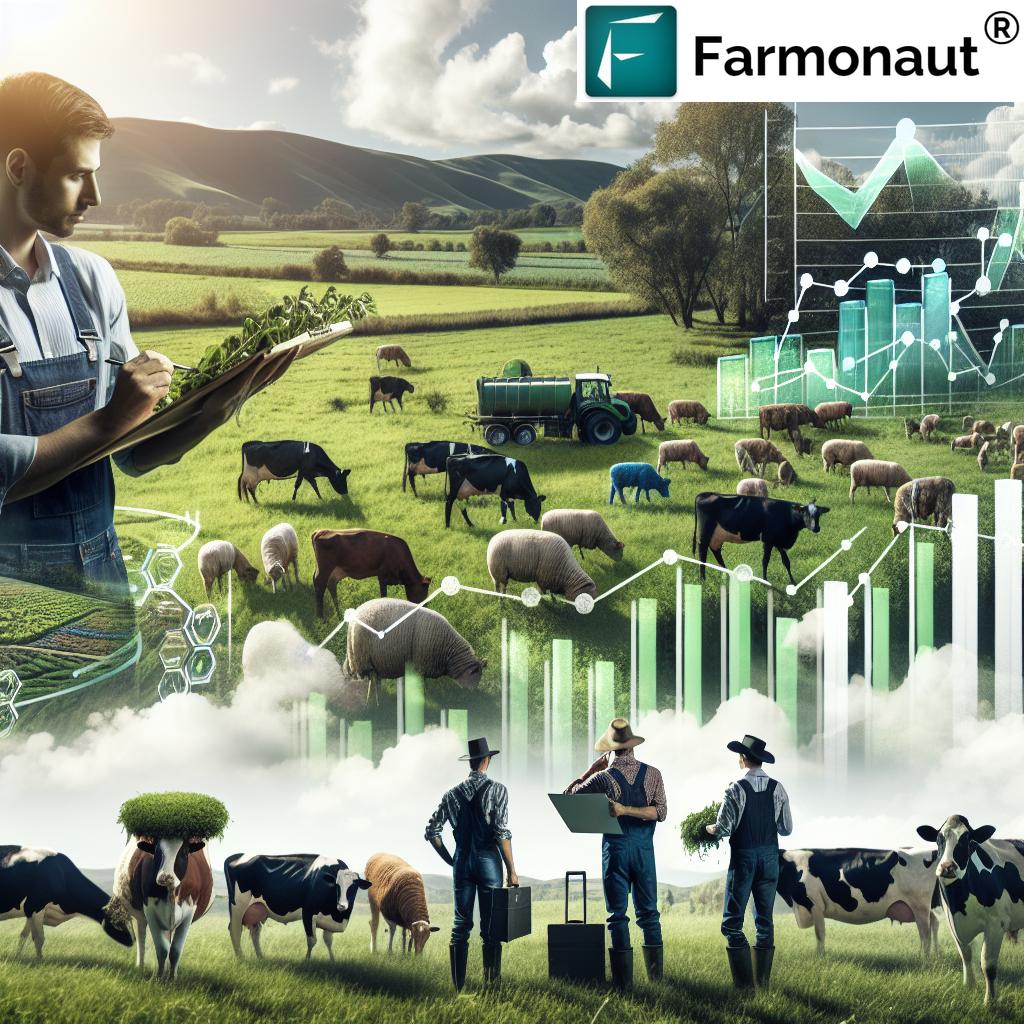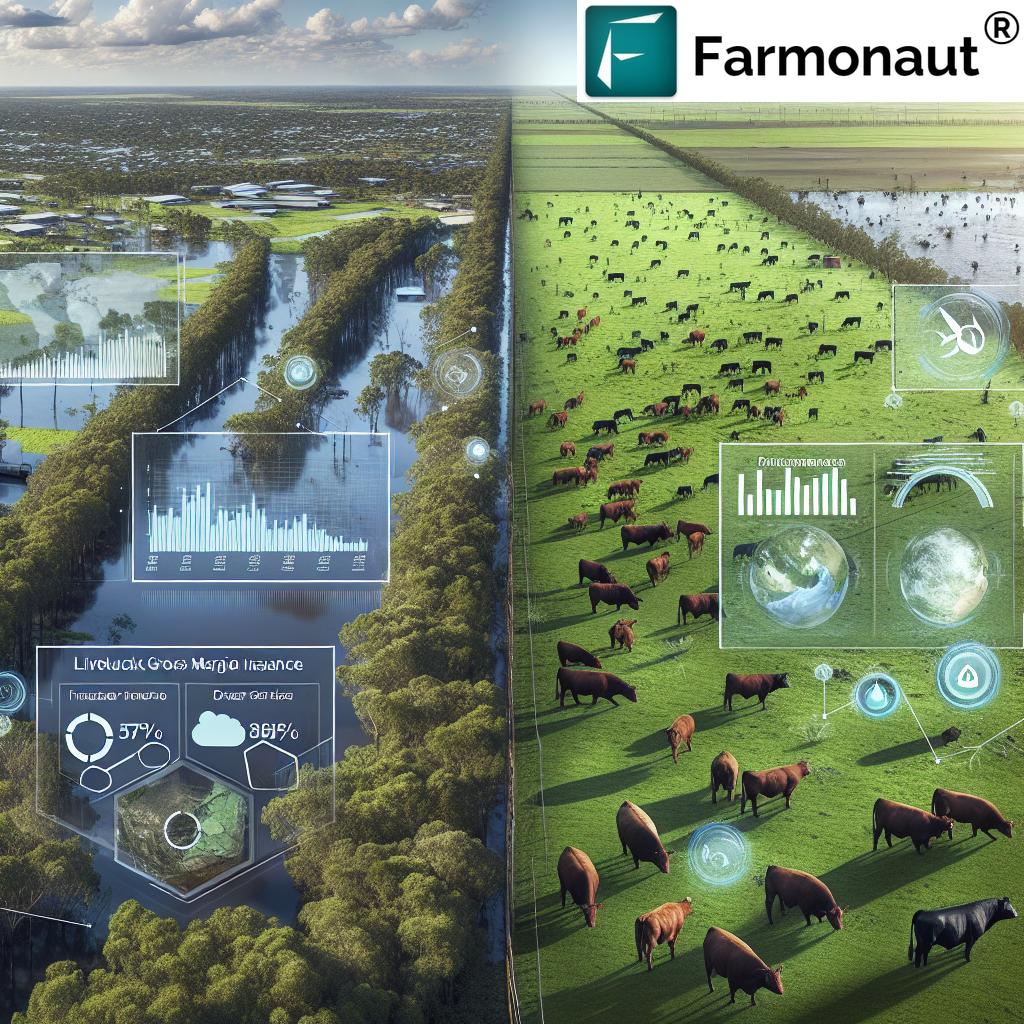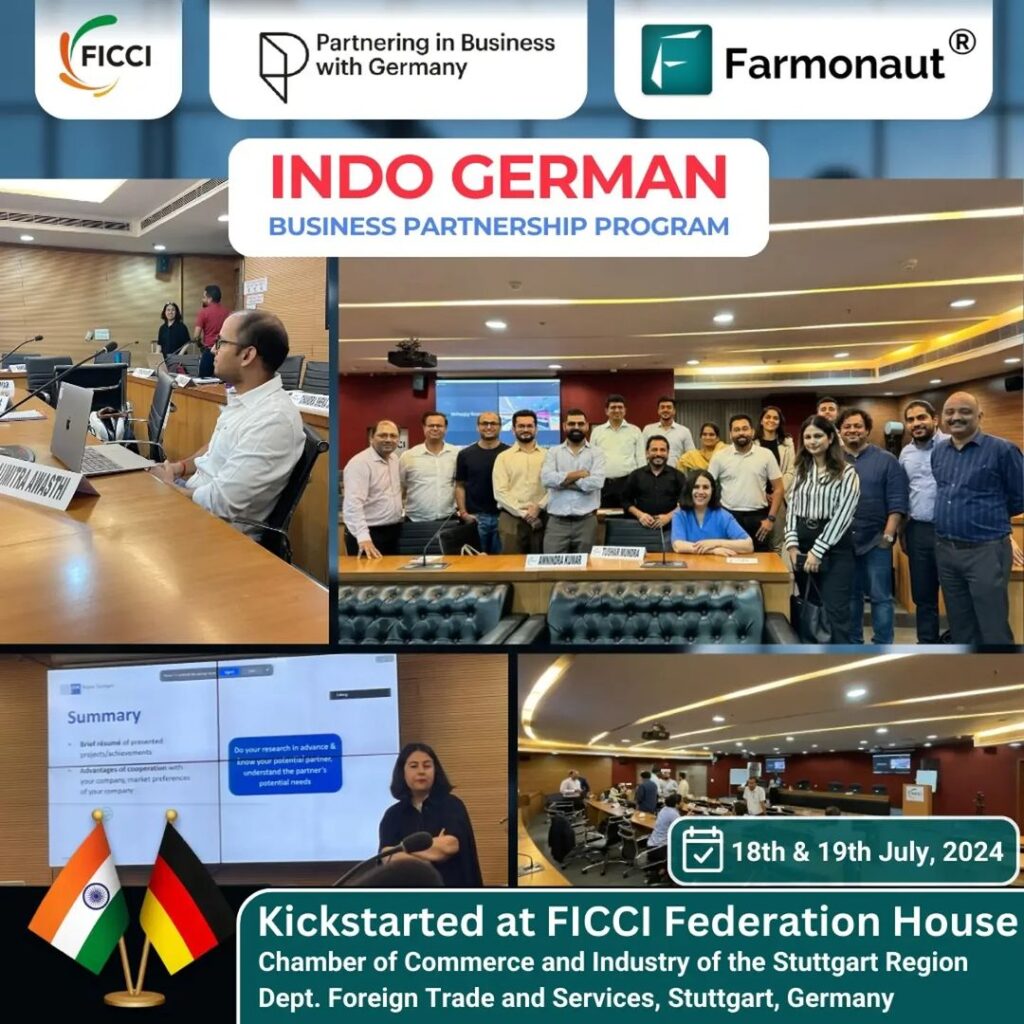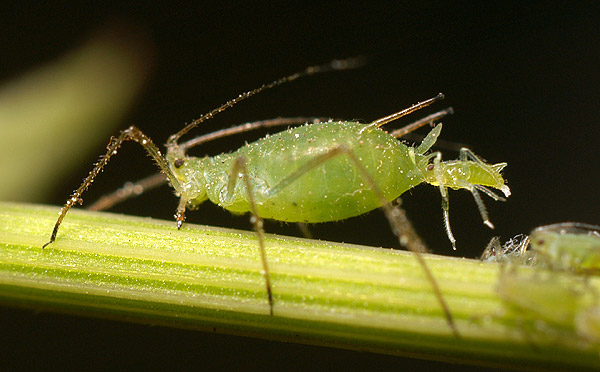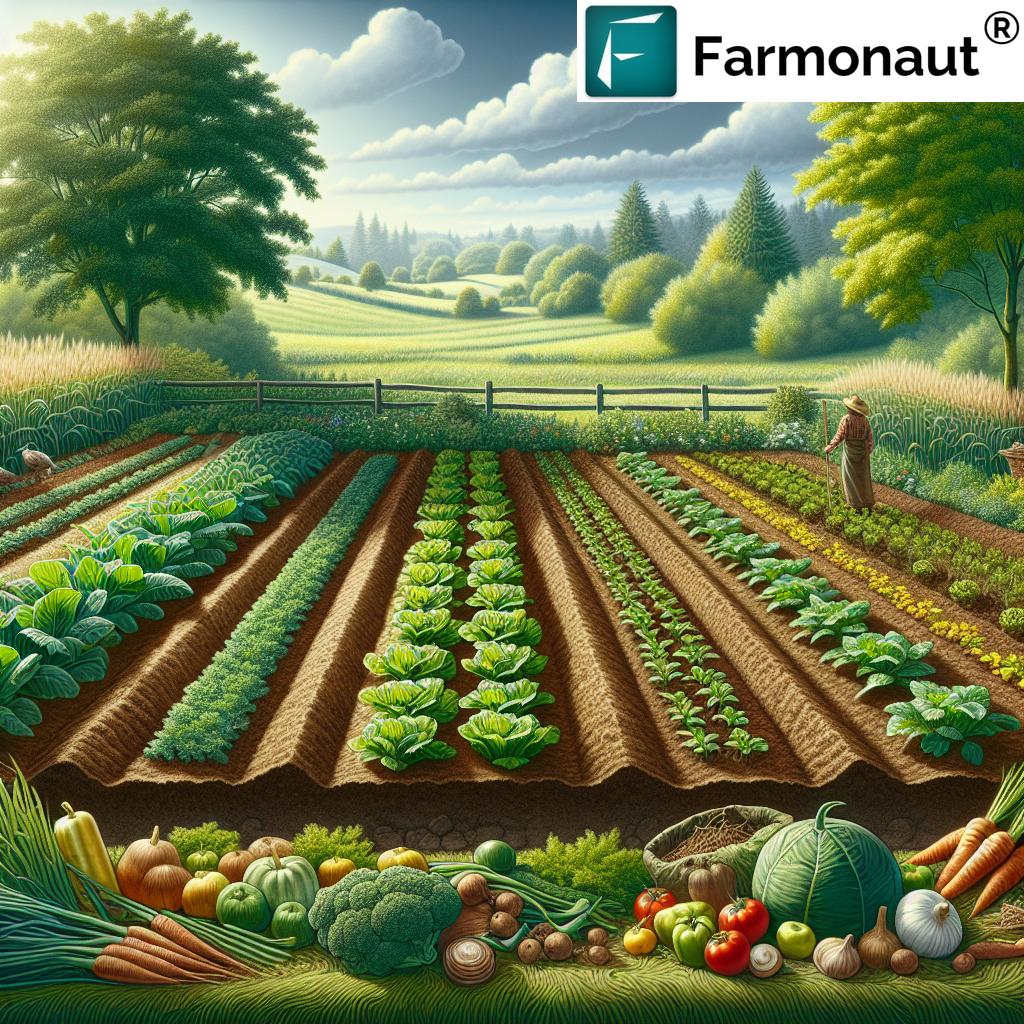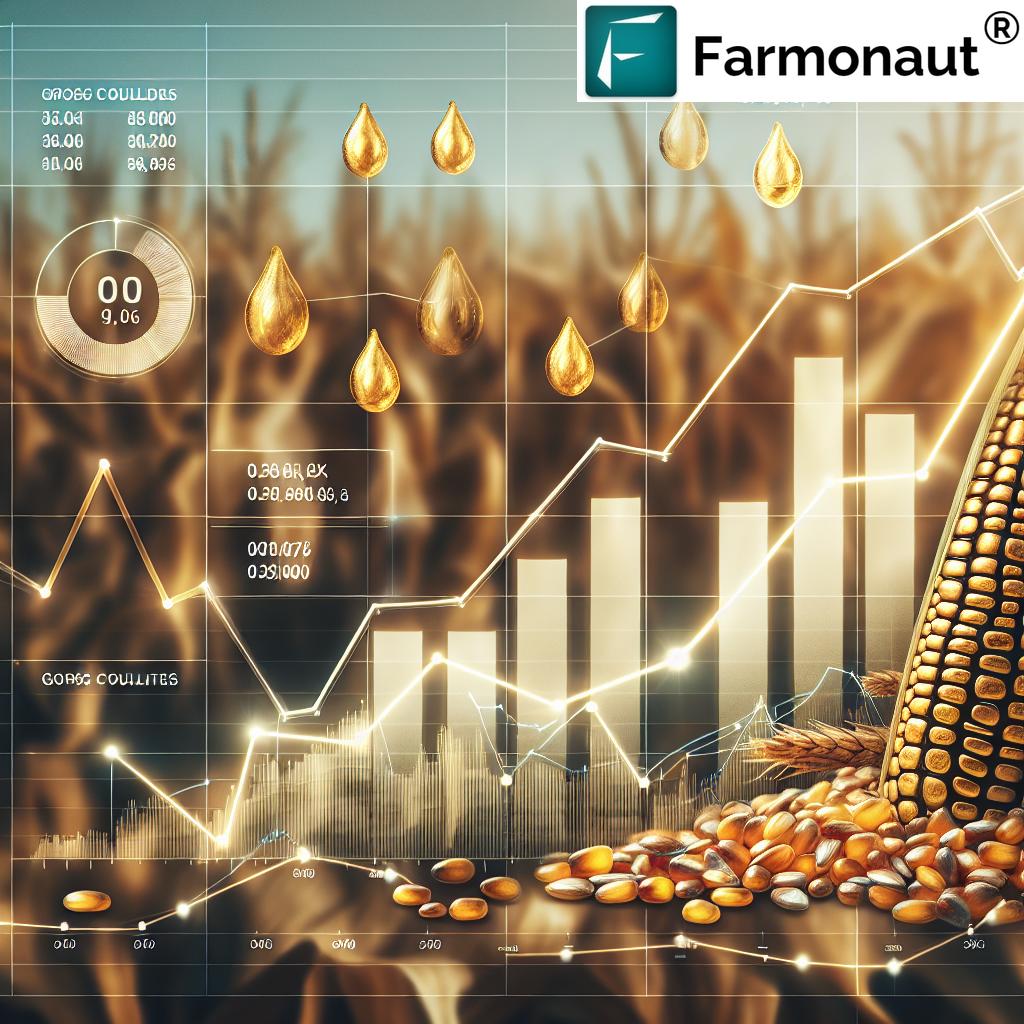Agriculture Peer Group: 7 Shocking Benefits Unveiled!
“Farmers in peer groups report a 35% faster adoption of sustainable practices compared to those working alone.”
Unlocking the Power of Agriculture Peer Groups
In the rapidly evolving landscape of agriculture, more and more farmers are turning towards agriculture peer groups for collaborative growth, shared resources, and cutting-edge farm management strategies. These cooperative collectives address crucial challenges—from fluctuating market trends and environmental uncertainty to the constant need for innovative techniques and sustainable farming practices.
As we strive for enhanced farm productivity, resilience, and profitability, the role of peer-driven agriculture collective networks has never been more important. By focusing on problem-solving, education, and structured communication, these groups empower us as farmers to adapt, thrive, and lead in a constantly shifting agricultural market.
Understanding Agriculture Peer Groups: Structure & Purpose
At their core, agriculture peer groups are thoughtfully structured collectives of 5 to 15 farmers who connect regularly to exchange knowledge, troubleshoot real-world challenges, and discuss the latest business trends and innovations. Meetings may include:
- On-farm visits to view practical implementations
- Hands-on workshops covering new technologies or production techniques
- Collaborative problem-solving sessions for common resource and management issues
- Peer-led discussions for shared learning and support
The foundation of these networks is trust, mutual respect, and a shared commitment to ongoing improvement. By joining forces, we as farmers collectively address the persistent isolation of rural agriculture, rapidly adapt to modern market demands, and shape the future of sustainable agriculture together.
“Over 60% of peer group members implement new farm management strategies within the first year of joining.”
Agriculture Peer Groups: 7 Shocking Benefits for Farmers
Let’s examine the seven most impactful advantages of joining an agriculture peer group—essential for any progressive farmer or agricultural business aiming to maximize productivity, profitability, and sustainability.
1. Enhanced Financial Performance
Joining agriculture peer groups unlocks measurable financial benefits. According to research, farmers who actively participate in peer-driven discussion groups, such as the widely studied dairy and sheep collectives in Northern Ireland, realize significantly higher gross margins than their counterparts operating in isolation (MDPI Study).
- Peer groups encourage rigorous budgeting, resource sharing, and benchmarking for best financial outcomes.
- Members gain valuable tips for reducing input costs and improving production efficiency.
- Discussions on market trends in agriculture allow us to time inputs and sales for maximum profit.
By benchmarking our performance against similar-sized operations and learning directly from those excelling in our sector, our collective business acumen and financial resilience grow steadily.
2. Accelerated Adoption of Innovative Practices
Agriculture peer groups are hotbeds for agricultural innovation adoption. When we witness a trusted peer successfully implementing a new crop rotation technique, digital tool, or sustainability measure, we become far more likely to try and adopt it ourselves. Peer-to-peer demonstration remains one of the most effective vehicles for rapid uptake of innovations, from satellite-based farm management to climate-smart sustainable farming practices (Farm-D).
- Shared field trials and first-hand testimonials build trust in new solutions.
- Joint experiments keep us at the forefront of agricultural technology trends.
- This dynamic is proven to drive change faster than top-down extension services or solitary self-study.
In this way, peer groups act as catalysts for improving farm productivity and safeguarding our long-term viability in the evolving global market.
3. Improved Decision-Making & Collaborative Problem-Solving
The diverse experiences and perspectives within farmer collectives elevate our ability to tackle stubborn management challenges. Through structured discussions and brainstorming sessions, we can:
- Dissect complex resource allocation, crop protection, or market-entry problems
- Constructively debate the merits of competing production techniques or new technologies
- Craft practical action plans that factor in risks and rewards, benefiting from our peers’ knowledge and hard-won lessons
According to reports from AgProud, group-based decision-making often leads to more robust solutions—because we’ve considered pitfalls from all angles before making a call.
4. Access to Resources and Support Networks
One of the standout benefits of an agriculture peer group is the immediate increase in resources and support available to us. Members often pool their buying power for discounts on inputs, organize shared machinery usage, or schedule group-based learning workshops.
- Collective purchasing and tool sharing reduce expenses for everyone
- We gain access to the latest market intelligence, technical training, and supplier recommendations
- Emotional support systems help us weather stressful periods, such as adverse seasons or volatile market turns
This agriculture resources and support network ensures no farmer has to go it alone—making our profession more resilient and future-fit. For advanced digital resource management, Farmonaut’s fleet management solution helps us optimize vehicle and machinery use, providing logistical tools tailored for both small- and large-scale agriculture businesses.
5. Personal & Professional Development
Farmer discussion groups nurture essential soft skills just as much as technical know-how. Regular participation hones our communication, presentation, and leadership skills while deepening self-confidence and broadening professional networks.
- Public speaking and facilitation roles rotate among members, challenging us to step outside comfort zones
- Exposure to varied backgrounds and experiences increases adaptability and resilience
- We learn to give, receive, and implement constructive feedback
Such holistic growth is especially important in agriculture, where the mental demands of farming and business can be just as intense as the physical labor. For a technological upgrade to personal and group management, Farmonaut’s large-scale farm management app offers user-friendly dashboards and workflow coordination—boosting both individual and team performance.
6. Increased Resilience Through Collective Action
Peer groups provide a safety net when we face economic, climatic, or market-driven setbacks. By pooling risk—whether through informal mutual aid, group insurance, or collective lobbying—we increase our sustainability as individual farmers and as a sector.
- Shared weather-data, research access, and yield tracking advances early warning and disaster preparedness, especially when paired with Farmonaut’s carbon footprinting platform for real-time environmental monitoring.
- We can influence local policy and negotiate with buyers from a position of strength, not as lone operators.
- Rapid crisis-response becomes routine as risk is widely distributed among group members, not shouldered by a single individual.
7. Empowering Sustainable Farming Practices
Sustainability is at the heart of the future of agriculture. Agriculture peer groups are uniquely positioned to drive long-term environmental and economic change. Together, we:
- Trial and refine climate-friendly production techniques at the farm level, rapidly spreading effective practices across our networks
- Share data, carbon metrics, and sustainable methods using digital solutions such as Farmonaut’s carbon footprinting toolkit
- Develop a shared sense of stewardship for our land and communities
Ultimately, our peer-driven collective action makes sustainable adoption practical, desirable, and, most importantly, highly effective.
Comparison Table: Common Farmer Challenges vs.
Peer Group Solutions & Measured Impact
| Farmer Challenge | Peer Group Solution | Estimated Improvement (%) | Example Outcome |
|---|---|---|---|
| Low Gross Margins & Profitability | Financial benchmarking, discussing input cost-saving strategies, and market trend intelligence shared among the group | 10–25% | Gross margins among dairy discussion group members in Northern Ireland outperformed non-members |
| Slow Adoption of Innovation & Technology | Live demonstrations, first-hand experience sharing, and joint workshops facilitating rapid knowledge transfer | 35% faster | Accelerated uptake of new production techniques and digital tools |
| Isolated Decision-Making | Problem-solving sessions, collective brainstorming, and evaluating multiple options via group discussion | Up to 40% | More robust risk management and better investment timing |
| Limited Access to Inputs & Market Resources | Group procurement, resource sharing, and insider market updates offered by network members | 15–30% | Lower bulk purchasing costs and improved supply reliability |
| Lack of Professional/Leadership Development | Rotating leadership and public speaking roles, peer-to-peer coaching, and feedback loops | Varies—significant confidence and networking gains | Stronger negotiation and business management skills |
| Vulnerability to Crisis & Climatic Risk | Group insurance models, shared weather data, and collective lobbying/advocacy | Better recovery, 20–50% faster response | Reduced downtime and buffer during difficult seasons |
| Difficulty Shifting to Sustainable Practices | Peer-led environmental trials, joint workshops on sustainability, real-time data sharing | 35% faster adoption | Broader implementation of water-saving and carbon reduction techniques |
Establishing & Sustaining Effective Agriculture Peer Groups
To ensure our peer group delivers all these collaborative farming benefits, attention to group structure, trust, and communication is vital. The following principles underpin successful farmers collective networks:
- Clear Objectives and Structure: We start with a shared vision—are we aiming to boost sustainability, innovate with new technologies, or improve business margins? Agendas and roles should be well-defined, from chairperson to moderator.
- Diverse and Complementary Membership: Groups mixing different ages, specializations, and farm types provide richer discussions and broadened perspectives, underpinning better problem-solving and innovation adoption.
- Strong Commitment to Confidentiality & Trust: What is shared within the group remains within the group. This sense of security fosters open and honest peer-to-peer sharing.
- Regular, Structured Meetings: Consistency is key—monthly or bi-weekly sessions with clear agendas ensure no topic is neglected and every voice is heard.
- Conflict Resolution Mechanisms: As with any group, differences will arise. Having established conflict resolution rules and rotating neutral facilitators keeps us on track.
- Active Participation & Feedback Loops: Equal participation is a must. Regular feedback and flexibility in group structure help sustain engagement and adapt to evolving member needs.
By following these principles, agriculture peer groups create a thriving learning environment where all members benefit—and significantly improve their farm management strategies and outcomes.
For groups looking to streamline administrative and technical discussions, Farmonaut’s API (Farmonaut Satellite & Weather API) offers customizable access to satellite crop health metrics, weather data, and more. To explore integration, see our API Developer Docs.
Integrating Technology: Farmonaut’s Role in Supporting Peer Groups
As our agriculture peer groups become more organized and ambitious, leveraging digital technology is a natural progression. Farmonaut stands out for its commitment to empowering farmers and agribusinesses using state-of-the-art solutions, all accessible and affordable through web, Android, and iOS platforms.
- Satellite-Based Crop Health Monitoring: Farmonaut provides detailed NDVI, soil moisture, and vegetation health analytics, allowing our groups to objectively compare field strategies and optimize resource allocation.
- Jeevn AI Advisory: The AI-powered advisory system delivers personalized, actionable insights to each group member based on real-time weather and satellite data—enabling us to make better cultivation and risk management decisions.
- Blockchain-Based Product Traceability: Using Farmonaut’s traceability tools, we can guarantee supply chain transparency and build trust with input suppliers and produce buyers (especially important for high-value or export markets).
- Fleet and Resource Management Tools: With Farmonaut Fleet Management, our groups can track machinery, optimize logistics, and share equipment more efficiently.
- Carbon Footprinting: Through Farmonaut’s Carbon Footprinting platform, we measure, manage, and reduce collective climate impact, setting clear sustainability targets for our farms and organizations.
Our peer groups can also utilize Farmonaut’s crop loan and insurance verification services (Crop Loan & Insurance) for streamlined, satellite-verified claims—helping us access essential financial products with less paperwork and fraud risk.
Whether via the Farmonaut App or seamless API integration for group-level tracking, these platforms are game changers for connected farmer groups, amplifying our ability to collaborate, monitor, and succeed.
Farmonaut Subscription Plans for Peer Groups & Agribusinesses
Ready to support your farmer discussion group with affordable, high-impact technology?
Explore Farmonaut’s flexible subscription plans designed for individuals, groups, large-scale farms, and enterprises. Enjoy scalable packages that fit your group’s needs and budget:
FAQ: Agriculture Peer Groups & Digital Farm Management
What is an agriculture peer group?
An agriculture peer group is a small, structured network of farmers who regularly meet to share experiences, discuss production challenges, and collaborate on farm management strategies. The aim is knowledge exchange, professional growth, and collective problem-solving.
How do peer groups help improve farm finances?
Peer groups foster open benchmarking, shared input purchasing, and transparent discussion of what drives profitability—lifting member gross margins by pooling expertise and resources. Tracking financial outcomes together makes everyone more efficient.
Can agriculture peer groups help with adopting innovative technologies?
Yes. Seeing trusted peers successfully adopt new technologies or sustainable methods—like digital farm management apps, satellite monitoring, or AI-based advisory—reduces hesitation and speeds up technology uptake across the group.
What’s the first step in forming a successful peer group?
Start by defining clear objectives and identifying local farmers with complementary interests and diverse experiences. Next, agree on meeting frequency, confidentiality rules, and leadership rotation before your first structured session.
How does Farmonaut support agriculture peer groups?
Farmonaut offers advanced satellite-based monitoring, AI-driven crop advice, resource/fleet management, and real-time carbon footprinting—all through affordable subscription plans and easy-to-use apps. Peer groups can use these tools collectively for group benchmarking and innovation tracking.
Which Farmonaut product is best for our peer group?
The large-scale farm management app enables centralized monitoring and task allocation for groups managing multiple farms. For environmental tracking, the carbon footprinting dashboard is ideal. Explore product traceability for supply chain-focused collectives.
Is there a mobile app?
Absolutely. Android and iOS versions are available, as well as a comprehensive web app.
Conclusion: The Future of Agriculture is Collaborative
As we navigate the ever-shifting landscape of agricultural markets, environmental regulation, and consumer expectation, agriculture peer groups offer a proven, results-driven strategy for inclusive growth and sustainable practices. Their foundation—knowledge sharing, strong communication, and unwavering commitment to improvement—empowers us to reimagine what is possible in modern farm management.
By leveraging not only the wisdom of our peers but also advanced technology platforms such as Farmonaut, we make data-driven decisions, build resilient support networks, boost farm productivity, and champion sustainability at every level. Whether you farm 2 hectares or 2,000, joining or forming a peer group is your gateway to achieving more—together.
Ready to unlock the power of collective action in agriculture?
Explore how Farmonaut can equip your peer group with everything required for smarter, more sustainable, and profitable farming.
Begin with Farmonaut today.



